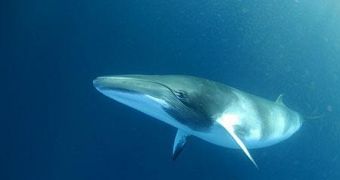Marine Mammal Science just released a new report stating that, as opposed to what marine biologists believed up until recently, the fin whales seen in the Strait of Gibraltar and the Alboran Sea do not actually live there, but merely visit these regions every once in a while.
This means that past estimations of the fin whale population in the Mediterranean need be reconsidered. Doing so is all the more important given the fact that said animals are an endangered species.
Therefore, it is crucial to keep a close eye on these marine mammals, so as to make sure the conservation projects designed and implemented are as efficient as possible.
Alpha Galileo Foundation reports that, in one of his most recent interviews, Manuel Castellote, a scientist working with NOOA (US's National Oceanic and Atmospheric Administration), explained how, “The Mediterranean population has easily been overestimated, as the census included the whole of the southeast Mediterranean, incorporating Atlantic fin whales within the Mediterranean census.”
According to the specialists who took part in this research, fin whales more often than not find themselves forced to move back and forth between the Atlantic Ocean and the Mediterranean Sea in order to escape human-caused noises.
Manuel Castellote wished to make it as clear as possible that, “The noise generated through human activity in the oceans leads to possible chronic effects on the health of this species.”
Furthermore, “Noise in the marine medium, despite being recognized as a significant pollutant, is far from being controlled and regulated within the waters of the Exclusive Economic Zone of Spain.”
Apparently, besides being negatively affected by the noises human industrial activities cause, fin whales are sometimes accidentally killed by ships. These tragic incidents make the future of the species even more uncertain.
For those unaware, fin whales are the second biggest cetaceans in the world, and can grow to be 27 meters long (89 feet) and weigh as much as 74 tons.

 14 DAY TRIAL //
14 DAY TRIAL //